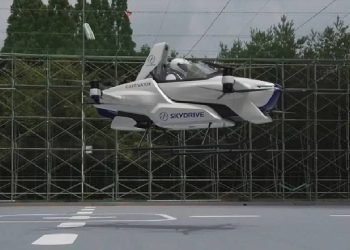THE question of whether alien life is out in the universe will be a lifelong debate – until we find the evidence.
Yet the UK's newest astronaut, Rosemary Coogan, believes it is “extremely unlikely” that humans are all alone.

Rosemary Coogan is the UK's third-ever astronaut, after completing her European Space Agency (ESA) training in April[/caption]

Humans have been firing radio messages in different directions into space like metaphorical flares since the 1960s.[/caption]
Humans have been firing radio messages in different directions into space like metaphorical flares since the 1960s, in the hope they will be detected by an alien intelligence.
But we've had no such luck.
“The universe is huge, which is one of the most fascinating things about it because it is almost beyond imagination to try and really think about what can exist in every corner of the universe,” Coogan told The Sun, during an exclusive interview at Farnborough. International Airshow.
“Personally, statistically speaking, it must be very unlikely that we are the only life to have ever existed in the universe.”
Coogan, who became the UK's third-ever astronaut after completing her European Space Agency (ESA) training in April, added: “Of course, you start to narrow it down, you think: Are we the only life?
“And then, are we the only intelligent life? Are we the only intelligent life that exists at this period in time?
“Of course, then, are we anywhere near another life form to be able to make contact with it or find traces of it?
“So you start to understand actually why we haven't yet found that definitive evidence.
“But I believe it's extremely unlikely that we are and always have been the only life forms.”
Nasa has upped its efforts by inking plans for three more groundbreaking probes to launch before the end of the decade, with the mission of finding life outside of Earth.
Astronomers have detected 85 planets outside our Solar System that could potentially sustain life.
The trouble is, they're so far away.
Each Earth-like planet sits between 70 trillion (70,000,000,000,000) miles to 15 quintillion (15,000,000,000,000,000,000) miles away from Earth.
However, scientists aren't done uncovering the mysteries of our own solar system, and what might be hiding on our planetary neighbors.
We're discovering so many exciting clues as to the history of the universe and that also might tell us where it's going, what could be there in the future.
Rosemary Coogan, ESA astronaut
Just days ago, NASA scientists found an “unexpected” but key ingredient for life on Mars – elemental sulfur, lurking in a cluster of yellow crystals.
It's the first time elemental sulfur has been found on the Red Planet in 30 years of exploration.
It is one of six building blocks for life, alongside carbon, hydrogen, nitrogen, oxygen and phosphorus.
These elements combined make up 98 percent of living matter on Earth.
“We're discovering so many exciting clues as to the history of the universe and that might also tell us where it's going, what could be there in the future,” Coogan added.
“And it's one of the reasons that we do this exploration.”
Coogan, from Belfast, was selected as an ESA astronaut candidate from a sea of over 22,500 applicants in 2022.
At the time, European space chiefs said the 33-year-old astrophysicist turned astronaut was “among the best” in her class.
Coogan is set to take part in operational tasks on the ground until she is assigned to a mission off-planet and aboard the International Space Station.
All you need to know about planets in our solar system
Our solar system is made up of nine planets with Earth the third closest to the Sun. But each planet has its own quirks, so find out more about them all…
- How old is Earth? Plus other facts on our planet
- How many moons does Mercury have?
- What color is Venus?
- How far away is Mars to Earth? And other facts on the red planet
- How big is Jupiter?
- How many moons does Saturn have?
- Does Uranus have rings?
- How many moons does Neptune have?
- How big is Pluto?
- How hot is the Sun?

Astronomers have detected 85 planets outside our Solar System that could potentially sustain life[/caption]Source

































